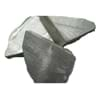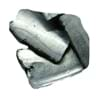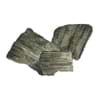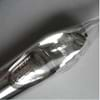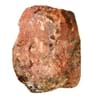Alkali Metals
|
Block
s block Element Family
Alkali Melting Point
97.72 °C Atomic Number
11 Boiling Point
883.00 °C Group Number
1 |
||
|
Block
s block Element Family
Alkali Melting Point
63.65 °C Atomic Number
19 Boiling Point
774.00 °C Group Number
1 |
||
|
Block
s block Element Family
Alkali Melting Point
180.54 °C Atomic Number
3 Boiling Point
1,347.00 °C Group Number
1 |
||
|
Block
s block Element Family
Alkali Melting Point
28.50 °C Atomic Number
55 Boiling Point
678.40 °C Group Number
1 |
||
|
Block
s block Element Family
Alkali Melting Point
38.89 °C Atomic Number
37 Boiling Point
688.00 °C Group Number
1 |
||
|
Block
s block Element Family
Alkali Melting Point
27.00 °C Atomic Number
87 Boiling Point
677.00 °C Group Number
1 |
Alkali Metals List
Looking for Alkali Metals List? then you are at the right place. We provide all Alkali Metals at a glance, through which you can navigate to their different parameter/properties like physical and chemical properties, mechanical stress/hardness, thermodynamics, magnetic and optical characteristics and many more! Want to know more about Alkali Metals and their properties? All alkali metals are placed under group number 1 and s-block of periodic table. These metals are highly reactive and are found in ores of other metals and minerals. Alkali metals can be easily distinguished from others as these metals have only 1 electron in their outer shell and can easily donate that electron to achieve a stable state. Few alkali metals are softer than other metals in periodic table. From the list of Alkali metals, Francium & Cesium are the most reactive metals. Alkali metals tarnish (oxidation) rapidly in the air. Along with alkali metals, you can also view the metals in other categories like Toxic Metals and Non Ferrous Metals. According to the study of chemical elements, all elements are mainly classified into three main types, i.e. metals, nonmetals and metalloids. Metals are generally found in the ores of other elements or minerals and exhibit hard and solid metallic luster. At metals.comparenature.com, apart from studying just a single metal, we also serves a facility of comparative analysis of metals based on their different properties & characteristics!
Alkali Metals Properties
Alkali Metals properties give you a broad overview of these metals from multiple angels. Moreover, enthusiasts are also catered with the detailed breakdown of the atomic, optical and chemical behaviour of the metals. Supplementary facts like side effects & benefits of these metals, their abundance in earth's crust, their presence in the human body, etc. are also furnished for knowledge seekers. All the properties of these metal such as their physical, chemical, mechanical, thermal, optical, biological, magnetic, electrical are explained in brief with the help of relevant specifications.
Periodic table of Alkali Metals illustrates the significance of the position of Alkali Metals in the modern periodic table. Since its inception, the periodic table has evolved time and again, due to the discoveries of certain new metals and their properties. The arrangement of metals is organized with a view to making their identification simpler! This arrangement is in the form of horizontal rows (periods) and columns(groups), which are classified by specific criteria. Atomic number is prominent among these criteria. All metals have unique characteristics and hence they have different atomic numbers and other properties. In the periodic table, all the metals are categorized under different categories like the alkali metals, alkaline earth metals, transition, post-transition metals, lanthanide series metals and actinide series metals.
|
||
|
||
|
